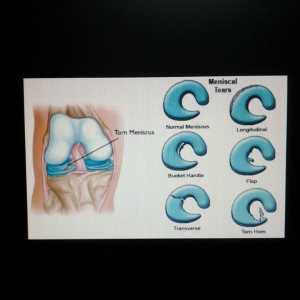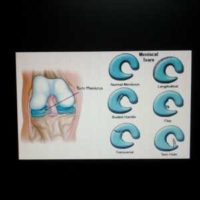MedicalResearch.com Interview with:
Waqaas Al-Siddiq
Founder and CEO of
Biotricity Inc
MedicalResearch.com: In light of Apple's announcement that it will incorporate an EKG monitoring device into Apple watches in the near future, would you discuss your vision of the growing medical wearables market?
Response: First of all, the public is still largely confused as to what constitutes a medical wearable device. Apple’s new watch, with its EKG monitoring service, is not a medical wearable because it will not produce clinical-grade data needed for diagnosis or treatment. This is not to say that Apple’s watch isn’t helpful. Many people are not even aware that they have a heart problem, but if their Apple watch consistently tells them that they have an irregular heart rhythm, or arrhythmia, they could take that as a sign to go to a physician and get a professional diagnosis. A physician will then prescribe a medical wearable device, such as our
Bioflux, to monitor the patient’s heart rhythm. Medical-grade wearable devices produce clinical-grade data that is accurate to within 90-95 percent or higher and are prescribed by physicians to make diagnoses and treatment plans.
That being said, I envision that the medical wearables market will expand considerably with the advent of consumer-based wearables that facilitate health tracking. One of the biggest problems we have today is a lack of awareness. Anywhere between 2.7 and 6.1 million people in the U.S. suffer from atrial fibrillation - a condition that makes the heart beat
irregularly - and many aren’t aware that they have the condition. Consumer-based health trackers like the Fitbit and the Apple Watch can help raise awareness and alert consumers to possible health issues, which will encourage them to see a physician for a thorough and professional examination and diagnosis. This, in turn, gives the medical wearable market a boost as more people will be diagnosed with the aid of a medical wearable. Another factor that is playing into this adoption trend is that next-generation medical wearables are increasingly becoming smaller and easier to use for both patients and physicians. So, I think that the future of medical wearables will see them firmly entrenched in mainstream practice and eventually become tools within the home for individuals with chronic issues.
(more…)









![MedicalResearch.com Interview with: Gili Regev-Yochay, MD, Lead author Director of the Infection Prevention & Control Unit Sheba Medical Center Tel HaShomer, Israel. MedicalResearch.com: What is the background for this study? Response: CPE (Carbapenemase producing Enterobacteriaceae) is endemic in Israel. In our ICU we had a prolonged CPE outbreak with one particular bacteria, which is not that common (OXA-48 producing-Serratia marcescens). Enhancing our regular control measures (hand hygiene, increased cleaning etc..) did not contain the outbreak. MedicalResearch.com: What are the main findings? Response: The outbreak source were the sink-traps in nearly all the patient rooms, which were contaminated with this same bacteria. Once we understood that this was the source we took two measures: 1) Sink decontamination efforts, including intensive chlorine washes of the drainage and water system, replacement of all sink-traps, acetic acid treatment and more, all these efforts were only partially and only temporarily successful. So that even today, after a year of such efforts and a period in which we didn't have any patients with this infection, the drainage system is still contaminated with these bugs and they grow in the sink-traps and can be found in the sink outlets. 2) The second measure we took was an educational intervention, where we engaged the ICU team through workshops to the issue of the contaminated sinks and together enforced strict "sink-use guidelines" (sinks are to be used ONLY for hand washing, prohibiting placement of any materials near the sinks, etc.). Using these two measure the outbreak was fully contained. To date, nearly 1.5 years since the last outbreak case, we did not have any further infections in our ICU patients with this bug. MedicalResearch.com: What should readers take away from your report? Response: Sink-traps and drainage systems can be a major source of CPE transmission. While traditionally CPE outbreaks were attributed to patient-to patient transmission, the environment and particularly water and drainage system appears to play a major role. MedicalResearch.com: What recommendations do you have for future research as a result of this work? Response: There is urgent need to find a technological solution for drainage system contaminations. While some have suggested to get rid of sinks in ICU this is probably not realistic in the era of emerging Clostridium infections (where washing hands, and not only alcohol rubs are needed). Citation: Gili Regev-Yochay, Gill Smollan, Ilana Tal, Nani Pinas Zade, Yael Haviv, Valery Nudelman, Ohad Gal-Mor, Hanaa Jaber, Eyal Zimlichman, Nati Keller, Galia Rahav. Sink traps as the source of transmission of OXA-48–producing Serratia marcescens in an intensive care unit. Infection Control & Hospital Epidemiology, 2018; 1 DOI: 1017/ice.2018.235 [wysija_form id="3"] [last-modified] The information on MedicalResearch.com is provided for educational purposes only, and is in no way intended to diagnose, cure, or treat any medical or other condition. Always seek the advice of your physician or other qualified health and ask your doctor any questions you may have regarding a medical condition. In addition to all other limitations and disclaimers in this agreement, service provider and its third party providers disclaim any liability or loss in connection with the content provided on this website.](https://medicalresearch.com/wp-content/uploads/sink.jpg)
![MedicalResearch.com Interview with: Gili Regev-Yochay, MD, Lead author Director of the Infection Prevention & Control Unit Sheba Medical Center Tel HaShomer, Israel. MedicalResearch.com: What is the background for this study? Response: CPE (Carbapenemase producing Enterobacteriaceae) is endemic in Israel. In our ICU we had a prolonged CPE outbreak with one particular bacteria, which is not that common (OXA-48 producing-Serratia marcescens). Enhancing our regular control measures (hand hygiene, increased cleaning etc..) did not contain the outbreak. MedicalResearch.com: What are the main findings? Response: The outbreak source were the sink-traps in nearly all the patient rooms, which were contaminated with this same bacteria. Once we understood that this was the source we took two measures: 1) Sink decontamination efforts, including intensive chlorine washes of the drainage and water system, replacement of all sink-traps, acetic acid treatment and more, all these efforts were only partially and only temporarily successful. So that even today, after a year of such efforts and a period in which we didn't have any patients with this infection, the drainage system is still contaminated with these bugs and they grow in the sink-traps and can be found in the sink outlets. 2) The second measure we took was an educational intervention, where we engaged the ICU team through workshops to the issue of the contaminated sinks and together enforced strict "sink-use guidelines" (sinks are to be used ONLY for hand washing, prohibiting placement of any materials near the sinks, etc.). Using these two measure the outbreak was fully contained. To date, nearly 1.5 years since the last outbreak case, we did not have any further infections in our ICU patients with this bug. MedicalResearch.com: What should readers take away from your report? Response: Sink-traps and drainage systems can be a major source of CPE transmission. While traditionally CPE outbreaks were attributed to patient-to patient transmission, the environment and particularly water and drainage system appears to play a major role. MedicalResearch.com: What recommendations do you have for future research as a result of this work? Response: There is urgent need to find a technological solution for drainage system contaminations. While some have suggested to get rid of sinks in ICU this is probably not realistic in the era of emerging Clostridium infections (where washing hands, and not only alcohol rubs are needed). Citation: Gili Regev-Yochay, Gill Smollan, Ilana Tal, Nani Pinas Zade, Yael Haviv, Valery Nudelman, Ohad Gal-Mor, Hanaa Jaber, Eyal Zimlichman, Nati Keller, Galia Rahav. Sink traps as the source of transmission of OXA-48–producing Serratia marcescens in an intensive care unit. Infection Control & Hospital Epidemiology, 2018; 1 DOI: 1017/ice.2018.235 [wysija_form id="3"] [last-modified] The information on MedicalResearch.com is provided for educational purposes only, and is in no way intended to diagnose, cure, or treat any medical or other condition. Always seek the advice of your physician or other qualified health and ask your doctor any questions you may have regarding a medical condition. In addition to all other limitations and disclaimers in this agreement, service provider and its third party providers disclaim any liability or loss in connection with the content provided on this website.](https://medicalresearch.com/wp-content/uploads/sink-200x150.jpg)




























